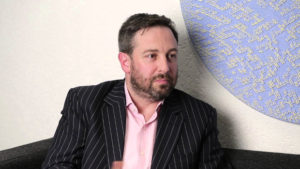
UX: enterprise and great expectations
There is no question that user expectations have risen: the days of expert interfaces being foisted on the general public were blown away by the storm of rising expectations as web sites, and particularly mobile apps, not only standardise forms of interaction, but these channels become customers’ predominant means of communication with business.
But can the same be said for the enterprise? Is enterprise IT stuck in the past, driven by inertia or the need to interconnect with complex and inflexible legacy systems? Is the demand for airtight security a barrier to usability? And should specialist tools really be taking a lead from consumer apps and devices in the first place?
Understanding the role of user experience (UX) is central in answering these questions then, but that in itself poses a question: is UX, as a discipline, truly understood?

“Is there a trade-off for a great user experience? Perhaps, but when an organisation needs to consider security — GDPR is a great example — it should look at how that can be delivered to the end consumer. UX as a process should help deliver that as part of the experience,” Lara Hanlon, IBM
David Williams, director of UX agency Bunnyfoot says that misunderstandings about what UX is still occur.
UX versus UI
“UX versus UI [user interface design] is something that we come up against quite regularly.”
Change appears to be afoot, though. Bunnyfoot has been in the UX business since 1999 — almost before UX was a thing outside consumer software development, and certainly before the concept had widespread traction. In that time, Williams and the company have observed a significant change in attitude.
“I think it is changing as people begin to realise the benefits of designing around the users’ needs, rather than business needs alone. We’ve been doing it since 1999, and we’ve noticed that things have changed a lot in the last five years. Companies are realising that they can make a lot more money by consulting users,” he said.
“Enterprise probably is lagging behind, but we’re seeing large companies get on board. Hiring UX specialists is quit a big thing at the moment.”
This is not without its problems, though; not least the lingering misunderstanding of what UX is.
“What we’re also finding is [that] a lot of people say they do UX, but they don’t: they know how to use Photoshop or design things, but that’s all. If you’re doing UX you really need to follow user-centric design; testing is a big thing to make sure you’re basing it around their needs,” he said.
The recruitment boom itself, however, is noteworthy, says Williams: “The fact that it’s harder to recruit people at the moment is significant in and of itself.”
If there is a misunderstanding of UX, perhaps it is because the concept has a tendency to become nebulous. What, then, do UX designers and consultant do?

“Increasingly, we find that our interaction is design-led, not architecture-led. People just want things to work; they’re not interested in the technology, the systems and the data that’s required for it, in their own right. The end goal has changed. people, customers are more interested in getting the experience right,” Mark Darbyshire, SAP
“It’s a really funny question to ask — and a really difficult one to answer,” said Mark Swaine, the independent UX designer behind UXguy.com.
Dublin-based Swaine, whose clients include Bank of Ireland, Accenture, PWC and Microsoft, says that basic groundwork is often being skipped over in the rush to incorporate UX principles into the enterprise.
“It’s so many things to do. Me, today? I see myself really as an educator. The role, activities, verticals and expectations are almost out of control. When you read job specs they’ve very confused. UX people are expected to be UI people, and also know about dev and frameworks. A lot of people don’t really know what they’re hiring,” he said.
“It really is down to being an educator. Most people will come to you with a solution in their head but it’s usually uneducated, and the scale of labour involved is never appreciated.”
UX and the enterprise
The question lurking behind all of this is not simply can the enterprise match consumer-focussed UX design, but should it?
Mark Darbyshire, chief technology officer for database and data management at SAP, says that it is already happening, even if it is not visible to people who only encounter IT products and services aimed at the consumer.
“We’ve certainly been focussing on UX for the best part of a decade. We’ve seen that we can reduce the number of steps, reduce the number of screens, [and] reduce the number of clicks. At the very least there is a productivity gain,” he said.
Darbyshire says that the transformation of enterprise IT is visible in a changed focus: people want to get things done, not worry about the underlying systems.
“Increasingly, we find that our interaction is design-led, not architecture-led. People just want things to work; they’re not interested in the technology, the systems and the data that’s required for it, in their own right.
“The end goal has changed. people, customers are more interested in getting the experience right,” he said.

“I see myself really as an educator. The role, activities, verticals and expectations are almost out of control. When you read job specs they’ve very confused. UX people are expected to be UI people, and also know about dev and frameworks. A lot of people don’t really know what they’re hiring,” Mark Swaine, UX-Guy
This, then, is the key lesson learned from the consumer side: “There is no longer a ‘build-it-and-they-will-come’ attitude.”
But enterprise needs, particular when it comes to internal systems and those used to engage with industry customers, necessarily differ from consumer needs. For a start the interaction is often more detailed and complex and, secondly, with GDPR now in force security and compliance issues have come to the fore like never before.
“The enterprise is a real mixed bag,” said Lara Hanlon, designer in residence at IBM Design, based at IBM Ireland.
“A lot of the time clients, [whether they are] customers or internal groups, will be looking at how users interact with a product or service.”
Hanlon says that IBM goes out of its way to communicate UX in a way that enterprise customers understand.
“The way we communicate is, we say that we’re the world’s largest design group. The reason we don’t define it as a UX consultancy is that we do a lot of things. It’s broader than UX alone,” she said.
“Oftentimes, clients come to IBM and they’re looking for a broader, holistic UX experience. It’s about process, and it takes into account many touchpoints, more than just an application or the service and the technology, but the holistic experience someone might have with an organisation or brand.”
Hanlon says that, in her experience, enterprise has caught-up with consumer-focussed UX, but that it has to approach the question in a way that meets different needs.
“A couple of years ago, it certainly was the case that the enterprise lagged behind. Maybe there’s [still] a bit of catch-up and enterprises tend to be a little bit slower, but there is a push for it, and there is some exciting work going on,” she said.
But is learning from consumer IT design the right way to go?
Swaine says that that following consumer UX is natural as those who have their expectations set — and raised — in consumer IT move into the workforce.
“It’s all technical but there’s this whole other side, which is current sentiment and current culture and how different demographics respond to things,” he said.

“What we’re also finding is [that] a lot of people say they do UX, but they don’t: they know how to use Photoshop or design things, but that’s all. If you’re doing UX you really need to follow user-centric design; testing is a big thing to make sure you’re basing it around their needs,” David Williams, Bunnyfoot
IBM’s Hanlon says that contrary to issues like security being a concern when it comes to improving the enterprise UX, a serious UX programme will address and improve them.
“Is there a trade-off for a great user experience? Perhaps, but when an organisation needs to consider security — GDPR is a great example — it should look at how that can be delivered to the end consumer. UX as a process should help deliver that as part of the experience,” she said.
Getting results from UX
If the end goal of engaging with UX is improvement, then it must or die by a quantifiable metric. Clients come to his agency for a variety of reasons, says Bunnyfoot’s David Williams, from testing through to design and implementation—but in all cases the objective is to improve the experience and, thus, drive engagement.
“It might be testing something, as they don’t want to launch something to the public without testing it. For a company like EasyJet we get customers in and they might have specific profiles. We observe them using the site and look at issues and problems that might be having: if we see six people having the same problem then there’s clearly an issue there.
“Another company might come to us saying they want to redesign their web site. They want to start from scratch. Traditionally they’d go to a design agency and launch, but [instead] we look at the users, try to understand them interview them, build profiles of them, look at their desires and frustrations and take this research and design and test from there.”
Darbyshire of SAP agrees that the end goal needs to be kept clearly in mind.
“It’s not just about refreshing it and making it pretty, taking away the heavy fonts and the grey of the page. Our customers are more interested in [asking] ‘How can I make a delightful UX that will be easy for them and more self-service?’. It needs to guide the user in a productive way.”
This, he said, will lead the next steps in UX in novel and interesting directions, not least among them automation.
“Machine learning (ML) has a role to play. You can start to use it to say ‘A lot of the time this is what this user does’, and that leads you into automation,” he said.
The objective here is not just technology for its own sake, he says, but smoothing out the user experience to increase productivity.
“If you automate 80%, that leaves you to work more deeply on the 20% where a computer can’t do it. There are lots of ways in which you can weave ML in [so] why don’t we free the human up to make decisions about other things? SAP CoPilot allows users to talk to the machine [in natural language], for instance.”
In the end, though, good UX will always turn on testing: UX may be more of an art than a science, but quantifiable results can be demonstrated if the right questions are asked.
“A lot of people think it’s ‘how can we give a consumer grade experience to it?’ Yes, that’s good, but what you need to ask is: what is the benefit?”







Subscribers 0
Fans 0
Followers 0
Followers